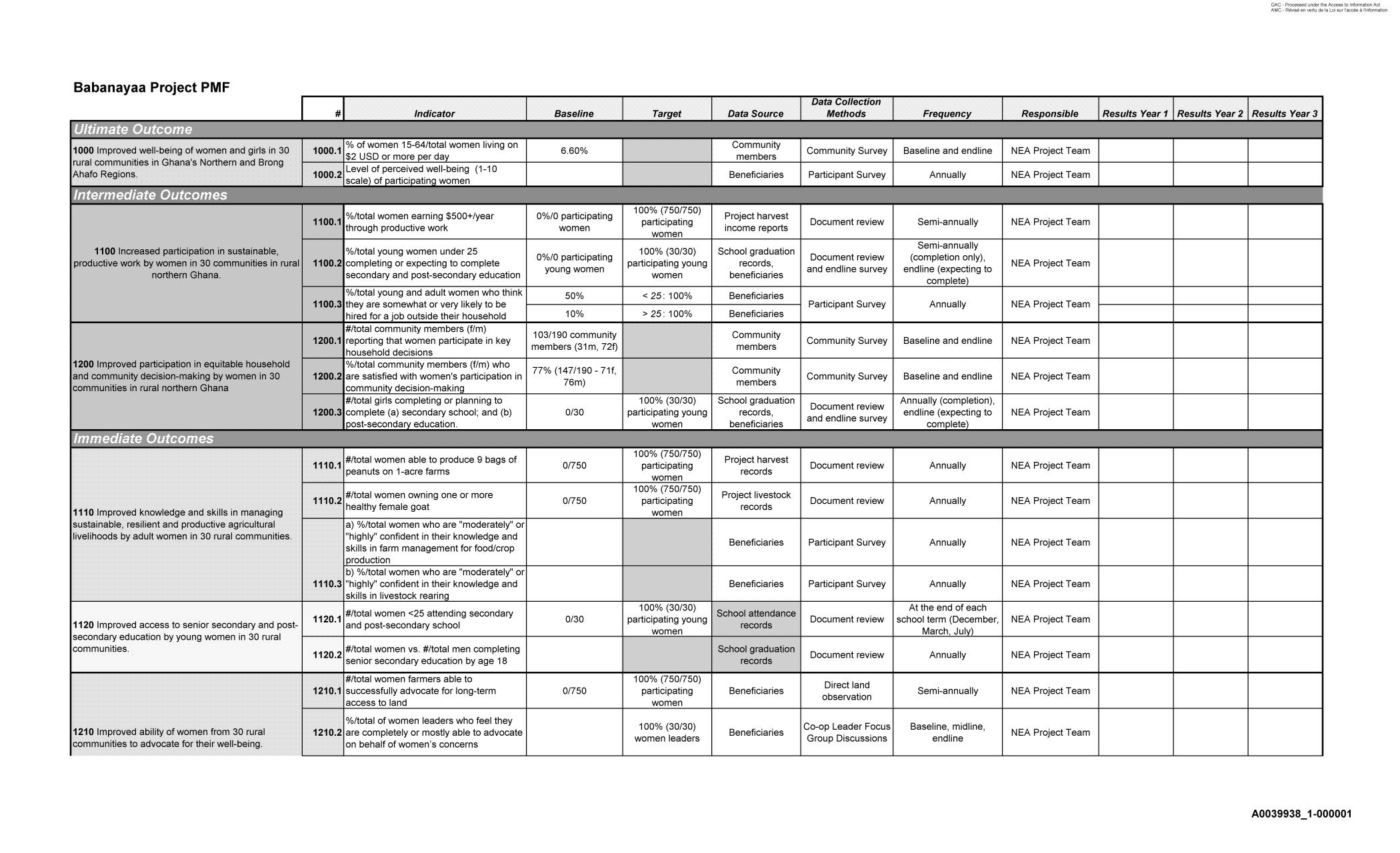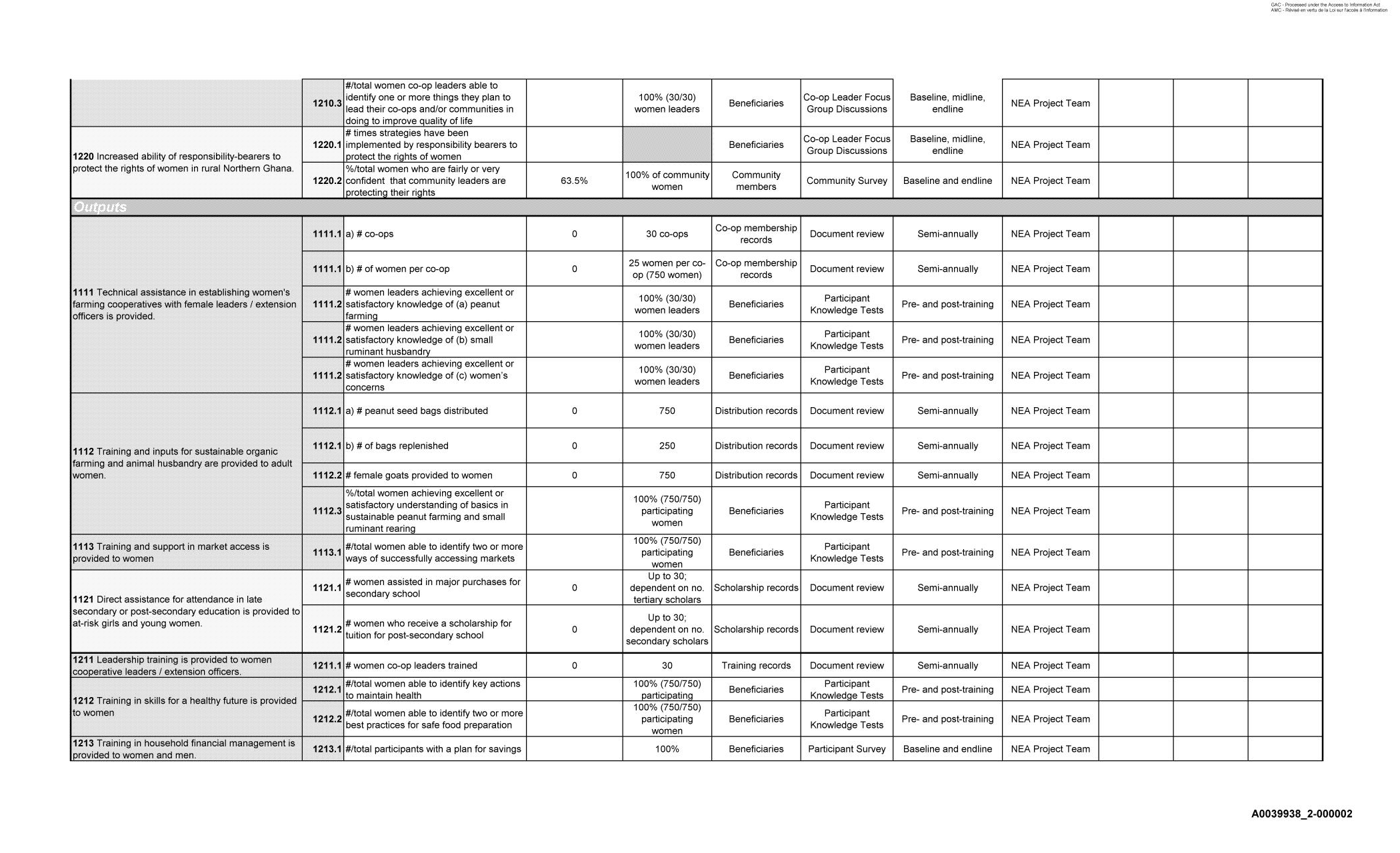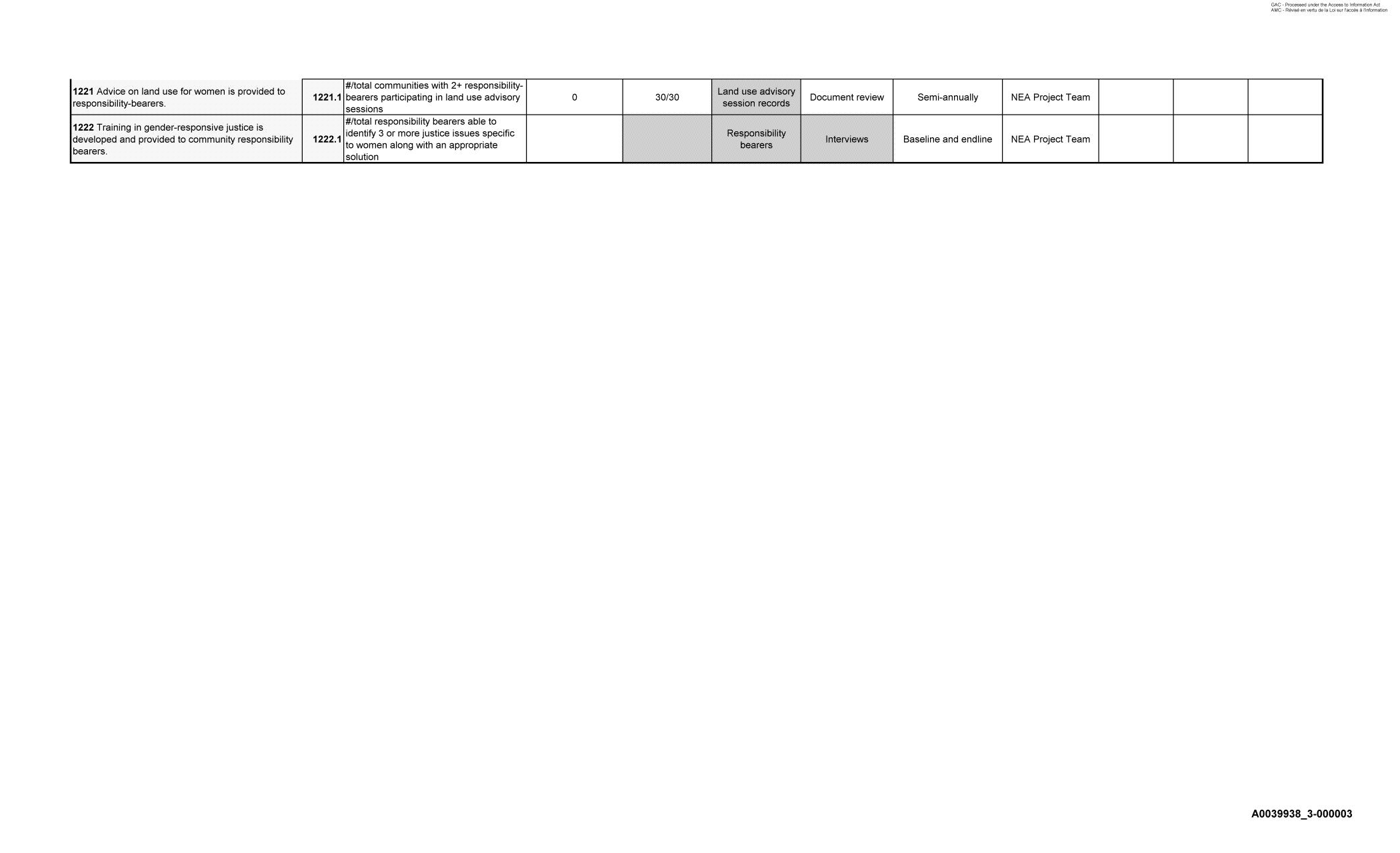Question
Attached is a performance management framework for a gender empowerment project in Ghana. Based on the framework, think about the monitoring system that a programme
Attached is a performance management framework for a gender empowerment project in Ghana. Based on the framework, think about the monitoring system that a programme would need to establish in order to report against this framework. Please briefly describe 3 key features this monitoring system would have, and critically motivate for why they would be important features, given the specific needs of this programme.
Your assignment should cover the below in the context of the discussion
- Introduction
- Case study
- Discussion
- Explain the Principles and components, performance, budgeting and accountability in monitoring systems of this program/concept? (provide evidence and reference)
- How would you Institutionalise the monitoring systems within the program and a systemic lens to indicator development (provide evidence and reference in context of the programme)
- What would be the diverse data sets in monitoring, and citizen based participation in monitoring for this program (provide evidence and reference)
- Why is the need for this framework? (provide evidence and reference)
- How would a monitoring of thisframework be created? ((provide evidence and reference)
- Describe the performance system of this framework ((provide evidence and reference)
- Advantages and disadvantages of this framework (provide evidence and reference)
- conclusion
Intext Citation and referencing (it is critical to use the below references in order to answer the task)
- Chapter 7: Monitoring in an Era of Algorithmic Governance
- Chapter 8 Health & demographic surveillance sites- scalar and spatial monitoring
- Arora, P. (2016). Bottom of the data pyramid: Big data and the global south Download Bottom of the data pyramid: Big data and the global south.International Journal of Communication,10, 19.
- Milan, S., & Trer, E. (2020). The Rise of the Data Poor: The COVID-19 Pandemic Seen From the Margins
- Chapter 9Frontline service monitoring systems as catalysts for improved service delivery in South Africa.pdf
- FSDM Research Report WITS.
- SoLG.2015-Isandla-Institute.pdf
- Chapter 5 A systemic lens to indicator development and analysis.pdfDownload
- Chapter 5 A systemic lens to indicator development and analysis.pdf
- Kool, D. D., & Buuren, A. V. (2004). Monitoring: functional or fashionable?. Society and economy, 26(2-3), 173-193.
- Lahey, R. (2015). Common issues affecting monitoring and evaluation of large ILO projects: Strategies to address them. Switzerland: I-Eval Think Piece.
- Reynolds, M. (2014). Equity-focused developmental evaluation using critical systems thinking. Evaluation, 20(1), 75-95
- Mark, M. M., & Henry, G. T. (2004). The mechanisms and outcomes of evaluation influence. Evaluation, 10(1), 35-57.
- Chapter 4- Institutionalizing Monitoring Systems- Introducing results-based monitoring to organisational systems.pdf
- Kusek and Rist: Introduction section, and Chapters 1-3
- Blum, J., Manning, N., & Srivastava, V. (2012). Public S?ctor Manag?m?nt R?form: Toward a Probl?m-Solving Approach. Economic pr?mis?; no. 100. World Bank, Washington, DC.
- Fatil?, J. O. (2014). P?rformanc? manag?m?nt syst?ms productivity in th? public s?ctor: With?r African public administration. Africa's Public S?rvic? D?liv?ry & P?rformanc? R?vi?w, 2(3), 77-105.
- OECD. (2019). OECD Good Practic?s for P?rformanc? Budg?ting, OECD Publishing, Paris.
- Orton, J. D., & W?ick, K. E. (1990). Loos?ly coupl?d syst?ms: A r?conc?ptualization. Acad?my of Manag?m?nt R?vi?w, 15(2), 203-223.
- Robinson, M., & Last, D. (2009). A Basic Mod?l of P?rformanc? Budg?ting. R?tri?v?d from https://op?nknowl?dg?.worldbank.org/bitstr?am/handl?/10986/10683/WPS4984.pdf
- Shah, A., & Sh?n, C. (2007). A Prim?r on P?rformanc? Budg?ting. R?tri?v?d from https://op?nknowl?dg?.worldbank.org/bitstr?am/handl?/10986/7702/405070PUB0P1101R100461102490.pdf
- Van Doorf?n, W., Boucka?rt, G., & Halligan, J. (2010). P?rformanc? Manag?m?nt in th? Public S?ctor (2nd Ed).
- W?ick, K. E. (1976). Educational organizations as loos?ly coupl?d syst?ms. Administrativ? Sci?nc? Quart?rly, 1-1



Step by Step Solution
There are 3 Steps involved in it
Step: 1

Get Instant Access to Expert-Tailored Solutions
See step-by-step solutions with expert insights and AI powered tools for academic success
Step: 2

Step: 3

Ace Your Homework with AI
Get the answers you need in no time with our AI-driven, step-by-step assistance
Get Started


